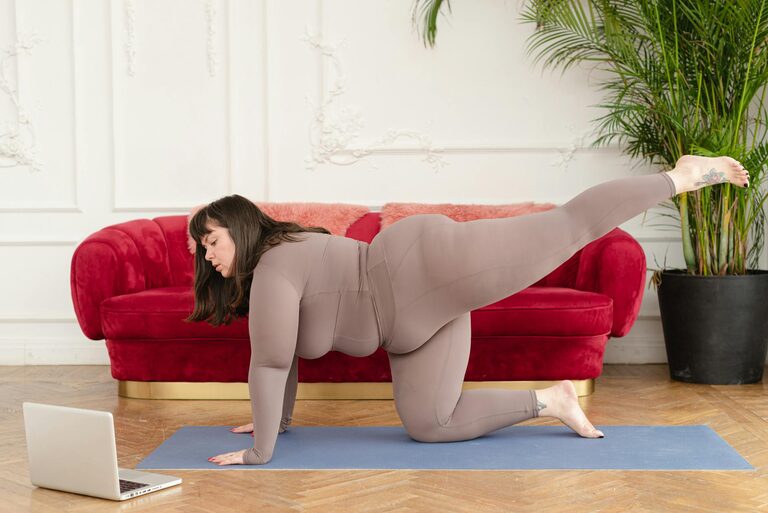Stretching is a gentle, effective way to improve your flexibility, ease muscle tension, and support overall health. Whether you’re new to exercise or looking to add some movement to your daily routine, stretching at home offers many benefits without requiring special equipment. This beginner’s guide will walk you through the basics of stretching, how to prepare safely, and provide some easy stretches you can do anytime.
Why Stretching Matters
Stretching helps to lengthen muscles, increase range of motion, and improve circulation. When done regularly, it can:
– Reduce muscle stiffness and soreness
– Improve posture and mobility
– Relieve stress and promote relaxation
– Enhance athletic performance and prevent injuries
Even a short daily stretching session can make a big difference, especially if you spend a lot of time sitting or standing in one position.
Getting Started: Tips for Safe Stretching
Before you begin, keep these safety pointers in mind:
– Warm up first: Stretching cold muscles can cause injury. Take 5–10 minutes to walk, march in place, or do light activity to get blood flowing.
– Stretch gently: Move into the stretch slowly and stop if you feel sharp pain. Stretching should feel good, not painful.
– Hold steady: Hold each stretch for 15–30 seconds. Avoid bouncing or jerking motions.
– Breathe deeply: Focus on deep, even breaths to help your muscles relax.
– Be consistent: Aim to stretch at least 3–4 times per week for the best results.
– Listen to your body: Everyone’s flexibility is different. Don’t push beyond your comfort zone.
Basic Stretching Routine for Beginners
Here are some simple stretches that target key muscle groups. Perform them slowly, maintaining good posture throughout.
1. Neck Stretch
– Sit or stand tall.
– Slowly tilt your head toward your right shoulder until you feel a gentle stretch on the left side of your neck.
– Hold, then switch sides.
2. Shoulder Stretch
– Bring your right arm across your chest.
– Use your left hand to gently press your right arm closer to your body.
– Hold, then switch arms.
3. Triceps Stretch
– Raise your right arm overhead.
– Bend your elbow so your hand reaches down your upper back.
– Use your left hand to gently push your right elbow for a deeper stretch.
– Hold, then repeat on the other side.
4. Chest Opener
– Clasp your hands behind your back.
– Straighten your arms and gently lift your chest.
– Hold the stretch while keeping your shoulders relaxed.
5. Side Stretch
– Stand with feet hip-width apart.
– Reach your right arm overhead and lean gently to the left.
– Hold, then switch sides.
6. Seated Hamstring Stretch
– Sit on the floor with your legs extended straight.
– Keep your back straight and slowly reach toward your toes.
– Hold the stretch without locking your knees.
7. Butterfly Stretch
– Sit with the soles of your feet together and knees bent out to the sides.
– Hold your feet with your hands and gently press your knees down toward the floor.
8. Cat-Cow Stretch (Spine Flexibility)
– Get on your hands and knees.
– Arch your back up toward the ceiling (Cat), then dip it down, lifting your head and tailbone (Cow).
– Flow slowly between these positions.
Creating a Stretching Space at Home
You don’t need much room or fancy gear to start stretching. Here are some ideas:
– Use a yoga mat or soft carpeted area for comfort.
– Wear comfortable clothing that allows free movement.
– Find a quiet spot with enough space to stretch arms and legs fully.
– Consider playing soft, calming music to create a relaxing environment.
Bonus Tips for Stretching Success
– Stretch after a workout to cool down and reduce soreness.
– Incorporate stretching into your morning routine to wake up your body.
– Use reminders like phone alarms or notes to keep up the habit.
– Track your progress by noting which stretches feel easier over time.
When to Consult a Professional
If you have existing health issues, injuries, or severe pain while stretching, it’s best to consult a healthcare provider or physical therapist. They can tailor a safe, effective program based on your needs.
—
Starting to stretch at home is simple, convenient, and rewarding. With patience and regular practice, you’ll notice greater ease of movement and more comfort in your daily activities. Why not try these beginner stretches today and begin your journey toward better flexibility and wellness?

